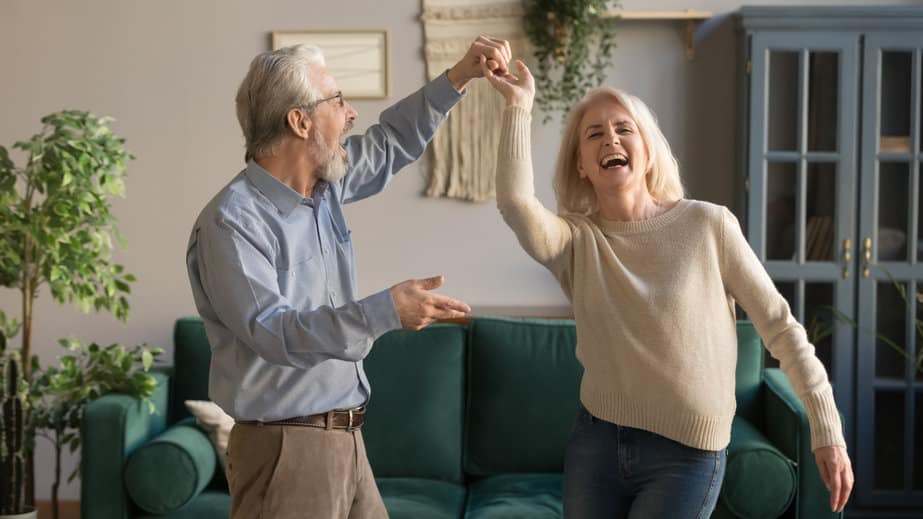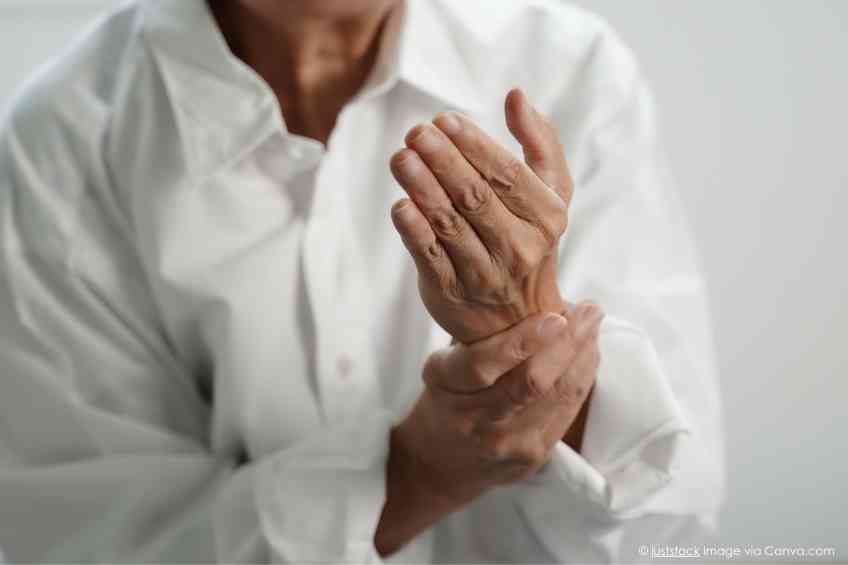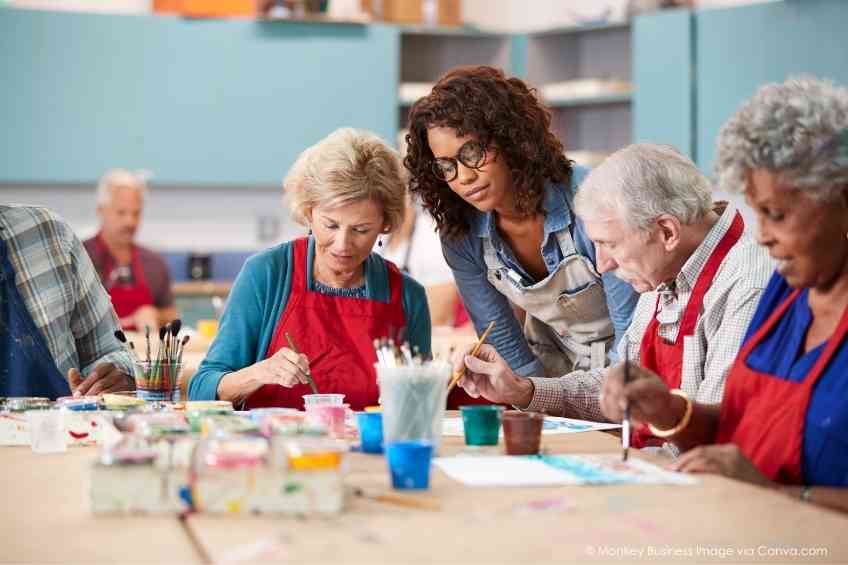Face it. Deep down inside almost everyone, even the stodgiest, wants to trip the light fantastic. Just think of Astair & Rodgers, Baryshnikov, Michael Jackson, Mr. Wiggles, Martha Graham, Gregory Hines, Isadora Duncan, Gene Kelly, Buddha Stretch, The Nicholas Brothers, Chubby Checker, the Village People and even the Grease and Saturday Night Fever versions of John Travolta. Conjure up images of dancing and glamor, fun, freedom and excitement almost immediately come to mind. But what about far-reaching social, mental and physical health benefits? Not so much. Maybe they should, at least according to Julia F Christensen and Dong-Seong Chang, co-authors of The Science of How Moving to a Beat is Good for the Brain, Body, and Soul. They recently took the time to talk to WellWell about how virtually everyone is hardwired to dance and why it has the power to transform lives—even among those with two left feet.
How did you two of you first connect and where did this intersection between neuroscience and dance originate.
JFC We met at a conference. I didn’t know Dong, he didn’t know me. But he sort of read the abstract that there was someone dance-related coming there. And we met on the dance floor. There were all these scientists standing on the side of the dance floor not dancing, and there was Dong.
DSC- We were at a conference with social neuroscientists and we’re all interested in how people look at other people. There are all kinds of different people from England, Germany, Spain, France, gathered on a beautiful island in Greece to talk for a whole week about social neuroscience. The special thing was that most of the day consisted of swimming in the green water and then dancing in the night. I think it was the most social setup ever. We got to know about our mutual interest in dancing and at the end, we were talking more about my research.
So, you’re mainly the two neuroscientists at this event who are dancing and moving around. Were you both already studying dance as a part of movement or was that something that clicked in your conversations?
JFC- I was already definitely working on dance. I have a background in ballet, I studied ballet and I was injured and thought I could
never touch anything related to dance. Then I found out that there’s actual research
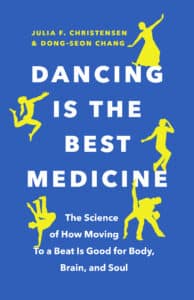
and an emerging one. Dance is still sort of being misunderstood, it’s something not very important in science but yeah, I was able to join a team that wanted to bring that forward so that it can be so much more for us as a species. Like we can get to know someone, not romantically, just by dancing together.
And some parts of the world don’t dance very much. That’s sort of my motivation to see what dance can do for people.
DSC- I started studying dance as a paradigm so I could study human-human coordination or as we call it “corepresentation.” How do we represent each other in our heads? This is, by the way, a big question in neuroscience. There is a hypothesis called the Wemote. The “We” “I” mote is “e”mote because, for example, when you go to the game theory there’s the prisoner’s dilemma. The dilemma in the game we play is do I betray you or do I cooperate? The interesting thing is, although the optimal solution is to betray and be egoistic, people don’t do it. People actually in all cultures and all countries, cooperate.
And so, in this sense, I think dance is a very primitive, very fundamental way of making people coordinate, connecting people and bringing them together. Because if we’re synchronized and do movement together, our brain waves synchronize. We start to understand each other better. Our blinking and our heartbeat synchronize as well. So actually, instead of talking and really trying to convince someone of, “Oh, I’m thinking this, I’m doing this,” a very effective way would be to say, “come, let’s dance!” We do the same moves and our brains automatically synchronize. So going back, that’s how dancing connects with neuroscience and Wemote.
Your book mentions a lot of benefits that extend past social interaction, like digestion, weight loss, even diabetes and arthritis relief. But how do these benefits go beyond social? Where does that come from?
JFC Dong was mentioning the co-representation and that happens when we move in synchrony. Moving in synchrony is a way to connect because when the brain co-represents synchronization, there’s a bit of a meltdown that also has a sort of soothing effect on the rest of the body. It’s not just that it makes us more peaceful, it makes us like each other more and it makes us feel more cohesion as a group. It actually also makes us feel safe. When we are part of a group, we have all these bonding hormones activated and they influence our immune system by regulating it.
So, in a way, the social aspect of dancing is already conducive to a more-healthy immune system or a more regulated immune system. On the other hand, there’s sort of this physical exercise happening. Dancing burns about 4-to-7 calories a minute, depending on the dance style, and it gets your heart rate up to 140. So it’s really aerobic and it can get you really sweating. It’s definitely something that keeps your body healthy, sleeping better, your muscles toned and regulates the heart so that you have less risk of developing heart disease. It also keeps your brain healthy because it helps to maintain active connections. And again, the first evidence points towards the possibility that it is a protective factor against developing dementia possibly over and above other types of physical exercise.
DSC If you look at people who age over 80, and you look at what makes them happy and healthy and live longer, a crucial part of it is social interaction. All the other factors, whether it be exercise or wealth or anything else, are all beaten by having a good social relationship. There is another book that came out in 2020 called Growing Young. It describes that we need to change the paradigm of what is healthy aging. And it goes back to being social. It’s most fun when you dance with others. Like maybe online, Zoom or partner dancing. You always have the physical exercise plus the social interaction in dancing and I think that’s what makes dance so effective in its impact on health.
JFC- Actually in dance, you also have the music. The music, movement and social aspect combined have a very important effect on our hormonal signatures.
Are there any forms of dance that you think are more effective for these benefits? Or is it more just the social aspect and moving around with other people?
DSC- It goes back to the rhythm part. I think everyone has a kind of intrinsic rhythm with emotions and their state in life. So actually, I think tango and swing are very good examples. We sometimes even call it the ying and yang of dance. The music and dance have to somehow synchronize with what you feel inside. So, when you express and you move, I think there’s no general better dance for everyone. But I think everyone has to find what dance fits them best. For some meditative people who love to slowly feel in their body, movement like qigong is the right kind of dance to find and practice. For people who are overly active, full of dopamine like me, jumping around, swing dance, breakdance; these kinds of movements are like great exits.
DSC- There are a few studies on the physiological effects too. For example, if you listen to sad music and it lets you express sadness, it doesn’t make you sadder. It actually relieves you from the sadness. And one of the hormones helping do that is prolactin. Some people say if you listen to sad music where you let your body flow with the dance of sad music like the Argentine tango, then your body produces prolactin. This prolactin hormone soothes your sadness.
DSC- And there’s also one aspect of dancing, especially in partner dancing like tango or swing where you have to completely trust and let yourself fall, which is very difficult because you are the master of your own body. But practicing letting yourself fall is very effective if you’re not trying to do it alone because escaping from yourself is the hardest. If you’re actually with someone together in the flow, then it’s much easier.
Is there anything you’d like to add or clarify?
JFC – I have one point which I always want to convey to people. Everyone can dance. And all these health effects are especially true for hobby dancing. So, when you don’t practice this competitively and when you don’t try to be more beautiful or better than others, then you don’t compare yourself. That’s when the cortisol level goes down, your immune system stabilizes, that’s when you express yourself and you find meaning. That’s when you get all these positive health effects. Competitive dancing and professional dancing are a whole different story.
DSC- In the title of the book, we said dancing is the best medicine, right? This is especially so after Covid when everyone is somehow down, angry, and unfulfilled. Everyone is asking: “What can give me consolation? What can give me some healing?” And my answer would be very simple and effective. The best thing to make your body and soul happy is to learn a new dance.
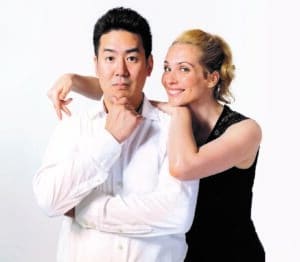 About The Authors
About The Authors
Julia F. Christensen studied psychology and neuroscience in Spain, France, and the UK. She received her Ph.D. from the University of the Balearic Islands. Her research into dance and the brain have been published widely including in the New York Times. Based in London, she loves to dance the tango.
Dong-Seon Chang studied cognitive science at Rutgers University and received his Ph.D. from the Max Planck Institute for Biological Cybernetics at Tübingen. A regular TV presenter and speaker, he is also the winner of several science slams. Based in Seoul, he loves to swing dance.
The Science of How Moving to a Beat is Good for the Brain, Body, and Soul is available from Amazon.

